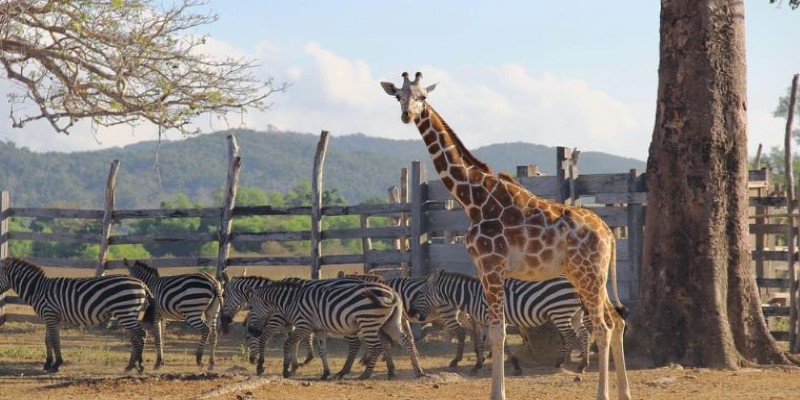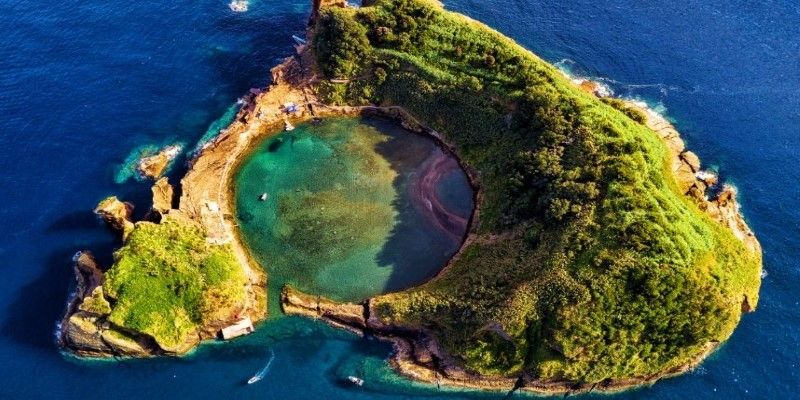What to Expect at Calauit Safari Park: Your Ultimate Wildlife Escape
Nestled in the beautiful island of Palawan, the Calauit Safari Park stands as one of the Philippines' hidden gems. This safari park isn’t just any ordinary wildlife sanctuary; it’s home to a variety of exotic animals that you wouldn’t expect to see in Southeast Asia. If you’ve ever wondered what it would be like to experience African wildlife in the Philippines, Calauit Safari Park offers just that.
Calauit Safari Park is distinct because of its peculiar history and conservation work. It provides an opportunity to bond with nature while helping conserve endangered species. With African species such as giraffes and zebras accompanied by native fauna, it's an ideal venue for nature enthusiasts and adventure explorers, serving as an unparalleled experience through both the discovery and conservation of wildlife.
What is Calauit Safari Park?
Calauit Safari Park is situated on Calauit Island, in Palawan province in the Philippines. Famous for its beautiful tropical scenery and sparkling waters, the park covers more than 3,700 hectares of land, making it one of the nation's most ambitious wildlife ventures. The park was founded in 1977 by then-President Ferdinand Marcos as a refuge for African animals. Meanwhile, the Philippine government shipped a number of African animals, such as giraffes, zebras, and gazelles, to the island.
Throughout the years, Calauit Safari Park has diversified its collection by adding indigenous and African species, bringing it to a one-of-a-kind wildlife destination. The park keeps expanding and enriching its animal diversity, providing an interesting experience for wildlife lovers. It is also very important in the conservation of endangered species as it takes part in preservation while bringing guests the privilege of close encounters with a great number of animals in their natural environment.
What to Expect When Visiting Calauit Safari Park?
A trip to Calauit Safari Park is not a conventional zoo visit. It's a simulation experience of a world where animals live and reproduce in a semi-natural setting. The park has a variety of animals, both African and local. There are giraffes, zebras, impalas, and waterbucks among the Africans, together with other bird species. The local wildlife comprises animals such as the Calamian deer and the Philippine crocodile, and hence, it is a significant area for conservation.

As you enter the park, you'll be greeted by wide, open spaces where animals roam freely. Unlike traditional zoos with cages and enclosures, Calauit allows its animals to live in large, open habitats that resemble their natural environments. This setup not only provides a more authentic wildlife experience but also encourages animals to exhibit natural behaviors.
You can explore the park on foot, but to get the most out of your visit, it’s best to take a guided tour. The knowledgeable guides will share interesting facts about the animals and the park’s history. Tours are typically done in open-air vehicles, which gives you an up-close view of the animals while also allowing you to travel through the park’s vast terrain comfortably.
The Unique Safari Experience
One of the most exciting aspects of visiting Calauit Safari Park is the opportunity to engage in a safari experience right in the heart of the Philippines. Unlike the vast African savannas, the landscape here is lush, green, and full of surprises. You’ll drive through dense forests and open grasslands, all while spotting giraffes grazing in the distance or zebras trotting by. The experience is a perfect blend of adventure and education.
The park’s safari experience offers plenty of opportunities for photography, so be sure to bring your camera. Whether you’re snapping pictures of the towering giraffes or catching a close-up of a zebra’s striking black-and-white stripes, the park is a photographer’s dream. The peaceful environment, combined with the diverse wildlife, makes for incredible photo opportunities.
Apart from the wildlife, Calauit Safari Park is also a haven for birdwatchers. The park is home to a variety of bird species, from local endemic birds to migratory species that visit during certain seasons. A tour guide can help you spot some of the rarer birds in the area, providing an enriching experience for anyone interested in ornithology.
Conservation Efforts and Sustainability
What truly sets Calauit Safari Park apart is its commitment to conservation. The park plays an essential role in preserving both African and native wildlife. As part of its conservation efforts, Calauit has worked on breeding programs for endangered species and has helped reintroduce animals into their natural habitats.

For instance, the park is home to one of the few remaining populations of the endangered Calamian deer, which is native to the Calamian Islands. The park also participates in protecting the Philippine crocodile, one of the world’s most endangered crocodile species. Visitors to the park not only get to witness these animals but also learn about the ongoing efforts to save them.
In addition to wildlife conservation, the park promotes sustainable tourism. Visitors are encouraged to respect the natural environment and the animals, with guidelines in place to minimize human impact. The funds generated from entrance fees and donations go directly towards supporting the park’s conservation programs, making a visit to Calauit Safari Park not only an educational experience but also a contribution to wildlife preservation.
Conclusion
Calauit Safari Park is a remarkable destination that offers more than just a wildlife experience. It allows visitors to connect with nature while learning about the park’s dedication to conservation and preservation efforts. With its diverse range of African and local wildlife, stunning landscapes, and commitment to sustainability, it provides an unforgettable adventure. Whether you’re a nature enthusiast, a photographer, or someone seeking an escape into the wild, Calauit offers something for everyone. By visiting, you’re also contributing to important conservation work, making it not only an enriching experience but also one that supports the future of endangered species.











